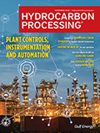Zardynezhad, S. - TurboTech Consulting Corp., Calgary, Alberta, Canada
Shahab Zardynezhad is a registered Senior Mechanical Engineer in Alberta with more than 30 yr of experience working on many of the world’s largest oil, gas and petrochemical projects. He has experience in engineering, procurement services, manufacturing, shop/field inspection, installation, commissioning, startup, reliability, and the maintenance and operation of pumps, compressors and turbines. Mr. Zardynezhad holds a BS degree in mechanical engineering from the University of Petroleum of Iran, an MS degree in industrial engineering from I.U.S.T-Iran, an MS degree in project management and an MS degree in mechanical engineering from the University of Calgary. He is a certified API inspector for rotating equipment.







Comments